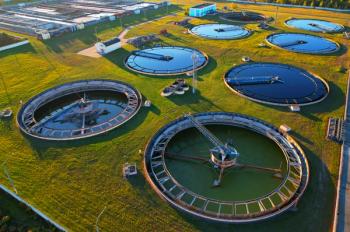
- The Column-11-06-2019
- Volume 15
- Issue 11
Analysis of White Oils Using AgLC×GC
Researchers have developed two new methods for the analysis of MOAHs in highly purified mineral oil fractions (white oils) using comprehensive AgLC×GC, one method uses FID, while the other uses VUV.
Researchers have developed two new methods for the analysis of mineral oil aromatic hydrocarbons (MOAHs) in highly purified mineral oil fractions (white oils) using comprehensive off-line silver phase liquid chromatography×gas chromatography (AgLC×GC), one method uses flame ionization detection (FID), while the other uses vacuum ultraviolet detection (VUV) (1).
White oils are widely used for moisture control and skin protection across the cosmetics industry, as well as a water loss barrier in food such as fruits and candies. Unfortunately, if the oils are insufficiently purified they can contain excessive levels of residual MOAHs. This is an issue because larger MOAH species containing 3–7 fused aromatic rings are suspected to induce DNA damage making them mutagenic, carcinogenic, and genotoxic (2–5). To address this methods are necessary to evaluate the level of purification in white oils as well as determine the total level of MOAHs in the oils and characterize the MOAH species.
Current methods rely heavily on the separation of mineral oil saturated hydrocarbons (MOSH) prior to quantification, however, partial coelution when attempting to separate using normal-phase LC hampers the method, and further updates to the method have also identified problems related to tailing in the MOSH fraction, a result of dead volume.
To address these issues, researchers developed a comprehensive AgLC×GC method with detection being performed by FID or VUV. The benefit of VUV detection is structural information of the molecules based upon their VUV spectra. This method offered specific advantages including eliminating the need for markers to determine MOSH/MOAH separation cutâpoint, the use of silver-based stationary phases in the first dimension, which gives a group-type separation of the mineral oil according to the degree of aromaticity, and the aforementioned structural data from VUV detection.
References
- A.R. García-Cicourel et al., J. Chroma. A in press (2019).
https://doi.org/10.1016/j.chroma.2019.460391 - T.A. Roy, S.W. Johnson, and G.R. Fundam, Appl. Toxicol.476, 466–476 (1988).
- A.J. Ingram, J.C. Phillips, and S. Davies, J. Appl. Toxicol.174, 165–174 (2000).
- M. Granella et al., Mutat. Res. 343, 145–150 (1995).
- M. Granella and E. Clonfero, Int. Arch. Occup. Environ. Health63, 149–153 (1991).
Articles in this issue
about 6 years ago
Diagnosing Cancer Using Cerumen and HSGC–MSabout 6 years ago
Agilent Opens New UK Spec Facilityabout 6 years ago
SepSolve Analytical Unveils New Canadian Facilityabout 6 years ago
Challenging Allergen Uncertainty Using LC–MS/MSabout 6 years ago
Sartorius Announces Acquisition of Danaher Life Science Portfolioabout 6 years ago
Introduction to Glycan Analysisabout 6 years ago
Vol 15 No 11 The Column November 2019 North American PDFNewsletter
Join the global community of analytical scientists who trust LCGC for insights on the latest techniques, trends, and expert solutions in chromatography.





